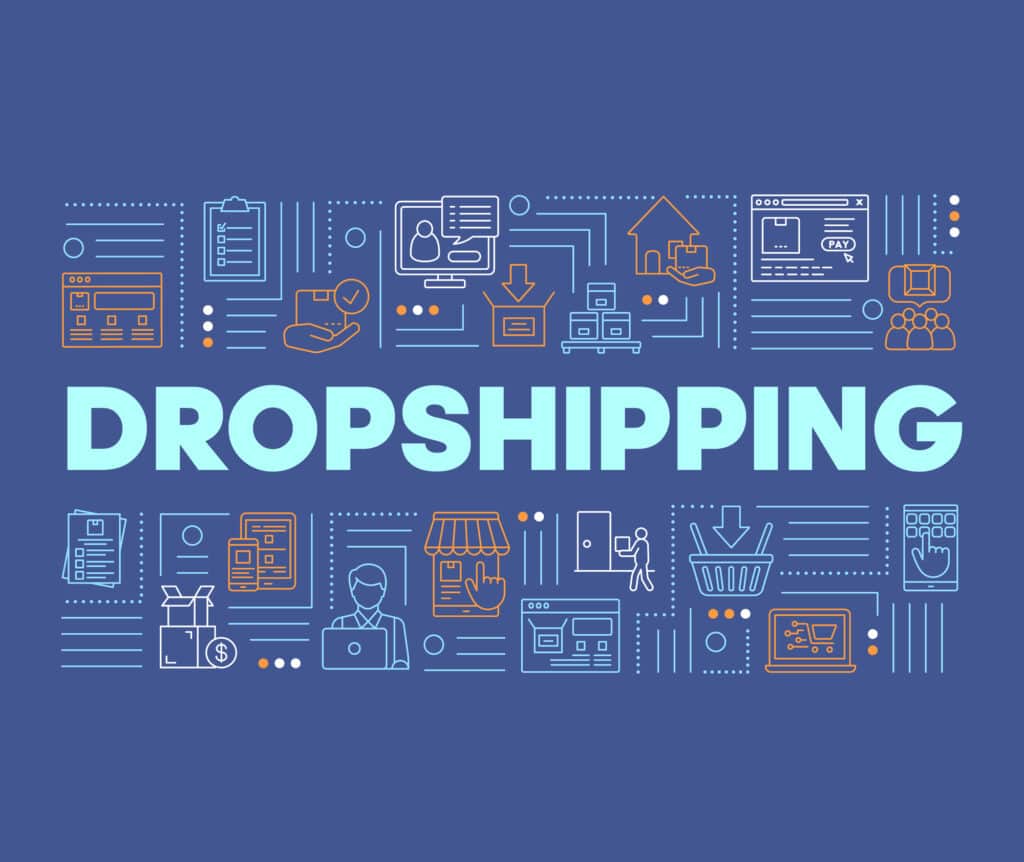
Download Your List Of
The 20 Best
Dropshipping Suppliers
Imagine waking up to the rich, comforting aroma of freshly brewed coffee. Not just any cup of joe, but your very own brand delivered right to a customer’s doorstep without you even lifting a finger. Welcome to the world of coffee dropshipping.
This isn’t another trend that’ll fade into oblivion like pumpkin spice lattes post-autumn. No, it’s about setting sail on an exciting journey where passion for java meets savvy entrepreneurship.
You’re probably wondering how? How do I find reliable suppliers or roasters for sourcing high-quality coffees? What does creating my unique private label involve? How do I ensure quality control and excellent customer service in this model?
Let’s take the initial steps to uncovering solutions to all these queries as we set off on this thrilling journey. Remember, every great adventure starts with just one step – or in our case, a single sip.
Table of Contents:
- What is Coffee Dropshipping?
- Getting Started with Coffee Dropshipping
- Finding Coffee Suppliers for Dropshipping
- Private Labeling and Customization
- Choosing Coffee Products for Dropshipping
- Setting Up Your Coffee Dropshipping Business
- Profit Margins and Pricing Strategies
- Shipping and Logistics for Coffee Dropshipping
- Ensuring Quality and Customer Satisfaction
- Marketing and Growing Your Coffee Dropshipping Business
- FAQs in Relation to Coffee Dropshipping
- Conclusion
What is Coffee Dropshipping?
If you’re a coffee enthusiast and dream of owning your own brand, then coffee dropshipping could be the business model for you. It’s like being a barista in the digital world but without needing to handle physical stock or manage shipping logistics.
In this setup, your role as an online retailer involves partnering with wholesale suppliers or roasters who offer dropship services. You list their coffee products on your website under your private label brand. When customers order from you, it’s forwarded directly to the supplier who takes care of fulfillment and delivery.
This business model offers some unique benefits. Firstly, starting a private label coffee brand becomes easier because product sourcing isn’t on you – it’s managed by reliable suppliers offering high-quality beans such as those found at Path Coffee Roasters. Secondly, dropshipping is low-risk due to minimal upfront costs compared to traditional retail models.
You might think that running such a business requires deep pockets or vast experience in e-commerce platforms and supply chain management; however, that couldn’t be further from reality. All that’s needed are basic internet skills and an understanding of marketing tactics to drive traffic towards your online store.
Coffee dropshipping businesses, therefore represent an exciting opportunity for budding entrepreneurs looking into building passive income streams online while sharing their love for great tasting java.
Getting Started with Coffee Dropshipping
Starting a coffee dropshipping business can be an exciting venture. The appeal lies in its low-risk model and potential for high returns.
Understanding the Basics of Coffee Dropshipping
The mechanics of running a successful coffee dropshipping operation aren’t overly complex. Essentially, you’re acting as a middleman between the customer and coffee roasters like Path Coffee Roasters. Your job is to market and sell their products without having to handle any inventory yourself.
Your online store becomes the point of sale where customers place orders. Once they do, your supplier takes care of everything else – from packaging to shipping. This allows you to concentrate on expanding your company’s reach.
Identifying Your Niche in the Market
In order to stand out among other businesses offering similar services, finding your unique selling proposition within this competitive landscape is crucial. Perhaps it’s offering rare single-origin coffees or creating personalized blends based on individual taste profiles.
Finding that niche will not only set you apart but also make sure that starting a coffee dropshipping business isn’t just another venture – it’s one primed for success.
Finding Coffee Suppliers for Dropshipping
Choosing the right coffee supplier is a crucial step in your dropshipping journey. A reliable partner can make or break your business.
You need suppliers who provide quality beans and efficient delivery, ensuring customer satisfaction and repeat orders. But where do you find such suppliers?
Connecting with Reliable Suppliers
The world of coffee dropshipping is diverse, filled with numerous suppliers offering profitable opportunities. It’s essential to carefully vet potential partners to get top-notch products consistently.
Consider private label coffee suppliers like Temecula Coffee Roasters or Aroma Ridge that are known for their high-quality offerings.
Selecting Quality Products
Your chosen supplier should offer a wide range of coffees from various regions worldwide. This includes everything from single-origin coffees to signature blends ready for white labeling.
Assessing Supplier Support Services
Beyond product quality, look at what other services the supplier offers. Are they just selling beans? Or do they provide additional value like packaging design support, labeling options, shipping logistics help?
A Note on Private Label Coffee Suppliers
If branding is vital to you (and it should be.), consider partnering with a private label coffee supplier who allows customization – adding personal touches like your logo on bags.
All these factors contribute towards finding an ideal partnership that aligns perfectly with your brand image while meeting customers’ expectations effectively.
Private Labeling and Customization
If you’ve dreamt of launching your own coffee brand, private labeling is the ticket to making that a reality. It’s like being handed a blank canvas but for coffee – allowing you to paint your own unique blend.
White label services let you put your branding on someone else’s product – it’s all about customization and personalization. This approach gives rise to an exciting opportunity where Path Coffee Roasters, among others, step in as experts who handle blending, roasting, packaging, and shipping under your very own brand.
The charm lies not just in selling high-quality java but also offering something uniquely yours. Imagine having control over everything from bag colors to signature blends. You’re creating more than just a cup of joe; you’re crafting an experience.
This business model works brilliantly because consumers love choices. Offering custom coffees lets them pick flavors that suit their palate perfectly while enjoying the comfort of their homes.
- Aroma Ridge: A popular choice among entrepreneurs thanks to its wide range of offerings including single-origin beans and flavored options.
- Temecula Coffee Roasters: Known for artisan roasted beans sourced responsibly from farms around the world.
- 13 Top Coffee Dropshippers Profitable (2023) – Private Label Coffee: An excellent resource if you need help choosing suppliers based on specific needs such as organic or fair-trade certifications.
This is one way how coffee dropshipping can become a fruitful endeavor when combined with clever marketing strategies.
Choosing Coffee Products for Dropshipping
Picking the right coffee products to sell in your online shop is crucial. Your choice will shape not only the character of your brand but also its profitability. Let’s get into it.
Selecting the Perfect Roast and Grind
First, consider offering a variety of roasts and grinds. The beauty of coffee dropshipping is that you can provide options without needing extra storage space or upfront investment. From light to dark roast, coarse to fine grind – give customers a chance to pick their favorite.
Your store should feature blends from different regions too because each region imparts unique flavors and aromas onto the beans. You could offer classic French Roast from Latin America or an exotic Sumatran blend.
Diversifying Flavors
Apart from traditional coffees, think about flavored ones as well. Caramel Macchiato or Hazelnut Cream might be just what some people are looking for in their morning cuppa joe.
The Importance of Quality Beans
In this business model where quality control may seem tricky since you don’t handle products directly, remember one thing: work with reliable suppliers who ensure high-quality beans go into every bag they ship out on your behalf.
Setting Up Your Coffee Dropshipping Business
Making a mark in the coffee business starts with setting up your online store. This involves choosing an eCommerce platform, designing the website, and creating engaging content to attract customers.
Building Your Online Store
Your first step is building an appealing and user-friendly online store. Choose a simple yet sophisticated design that reflects your brand’s image. It’s also important to have high-quality images of your products – this helps build trust with potential customers who can’t physically see or smell the coffee you’re selling.
You’ll need easy navigation so visitors can effortlessly browse through different types of coffee blends, flavors, and roasts available on your site. Plus, make sure it’s mobile-friendly as most people now shop from their phones.
Integrating with Suppliers
The next part is integrating with suppliers for seamless order processing – this is where Shopify, one of the popular platforms comes into play. Shopify allows you to easily connect directly to dropshipping suppliers like Aroma Ridge or Temecula Coffee Roasters.
To get started quickly without dealing with technical hiccups during account set up or app integration phase, consider hiring experts from sites such as UpWork. They will help configure everything correctly so orders placed on your site are automatically sent over to these suppliers for fulfillment.
Profit Margins and Pricing Strategies
Paying attention to profit margins is crucial in the coffee dropshipping business. Why? Because it’s your actual earnings after deducting all costs, such as buying from your coffee supplier, shipping, marketing expenses, and more.
The pricing strategy you choose can directly impact these margins. So what’s a good approach? Consider factors like production cost, market demand for certain blends or origins of coffee beans (say, Colombian vs Ethiopian), and how much customers are willing to pay for premium products.
Analyzing Your Costs
To maximize profits, start by understanding all associated costs with each product. This includes purchase price from suppliers plus any other related fees like packaging or customization if you’re offering private label options. Always remember that every dollar saved on cost increases your margin.
Understanding Market Trends
A successful pricing strategy requires an eye on market trends too. If specialty coffees are selling well at higher prices because consumers value unique flavor profiles over standard supermarket fare – this could be an opportunity. Set competitive prices but don’t undervalue high-quality offerings.
Setting Prices For Profitability
Your ultimate goal should be profitability while providing great value to customers so they keep coming back for more of their favorite brews. Make sure to include a healthy markup in your retail price while keeping rates attractive compared to competitors’ offers – striking the right balance will help ensure long-term success in the world of coffee dropshipping.
Shipping and Logistics for Coffee Dropshipping
In the world of coffee dropshipping, handling shipping and logistics is a piece of cake. As an online entrepreneur, you don’t have to worry about stocking or delivering products yourself.
Coffee dropshippers handle all aspects of this business model, including fulfilling orders. The order fulfillment is handled for you, so all that’s left to do is sell the product and let them take care of getting it from point A to B quickly. No need for you to stockpile boxes in your living room or lose sleep over delivery times.
This system allows businesses like yours at MoneyTreeSeed.com not only provide quality service but also enables worldwide shipping. Your customers can enjoy their favorite Temecula or Chicago blend without any geographical constraints.
The trick here lies in choosing the right coffee dropshipper. Look out for those who prioritize speediness and reliability – because when it comes down to it, these factors can make or break customer satisfaction.
To ensure smooth sailing (or should we say brewing?), make sure there’s clear communication between you and your supplier about order fulfillment processes. Timely updates on inventory levels will let you keep promises made on your website about delivery times.
Note: Some suppliers might charge a monthly fee while others may ask for non-refundable signup fees – so factor these into account as well.
Ensuring Quality and Customer Satisfaction
Quality control in a dropshipping model, where you don’t handle the product directly, can be tricky. But with high-quality coffee products and excellent customer support, it’s more than achievable.
The key is to work closely with your coffee supplier. You need to make sure they adhere strictly to quality standards. This involves everything from picking the best coffee beans for roasting to packaging them well for delivery.
Picking High-Quality Coffee Beans
Your journey towards ensuring top-notch quality starts at sourcing raw materials – coffee beans. It’s crucial that your chosen supplier offers nothing but premium grade beans. They should have an eye for selecting only ripe cherries during harvest season as these produce better tasting coffees.
Rigorous Roasting Process
Roasting is another critical stage where taste and aroma of your product are formed or destroyed. Your supplier must follow strict temperature controls while roasting; too hot might burn the beans whereas too low won’t unlock their full flavor potential.
Focused Packaging & Delivery System
A good delivery system will also contribute significantly towards maintaining quality of delivered goods. Path Coffee Roasters, one such renowned name in the industry, takes this very seriously by making sure orders reach customers fresh within a few business days after being roasted and packed properly in moisture-free bags.
Marketing and Growing Your Coffee Dropshipping Business
Your coffee dropshipping business won’t just grow on its own. It is critical to utilize successful advertising systems that address your crowd straightforwardly, while also keeping an eye out for chances to expand.
Digital Marketing: Start by creating a strong online presence. Use social media platforms like Instagram and Facebook to showcase your products and share interesting content about coffee culture. Invest in SEO tactics with terms such as ‘coffee dropshipper’ or ‘wholesale coffee’, which can assist customers locate you quickly when they’re searching for the ideal cup of joe.
You might also consider running ads on Google or other popular websites using relevant SEO Keywords. These could include phrases like “Chicago coffee”, “private label coffee brand”, or even specific blends like “Temecula Coffee”. Remember, people often shop with their eyes first, so be sure your branding is consistent across all channels.
Growing Your Business:
To effectively scale up your operation over time, it’s vital to maintain good relationships with reliable coffee suppliers. A dependable supplier can meet increased demand without compromising quality – something that’ll keep customers coming back for more.
Additionally, explore different revenue streams within the industry. For example: offer subscription services where customers receive new flavors every month; collaborate with cafes who need regular deliveries; sell brewing equipment alongside beans etc.
Finally remember – this isn’t a race. Sustainable growth takes time but if done right, it can lead to long-term success.
FAQs in Relation to Coffee Dropshipping
Is coffee dropshipping profitable?
Coffee dropshipping can be a gold mine, but it hinges on your marketing skills and picking the right niche.
Can you dropship coffee beans?
Absolutely. You can peddle whole bean or ground coffee with the help of reliable suppliers.
Can you dropship coffee on Shopify?
You bet. Shopify is perfect for setting up a sleek online store and integrating with your supplier’s system seamlessly.
Is dropshipping coffee profitable in 2023?
Predictions point to yes, as long as people keep craving their daily java fix and ecommerce stays strong.
Conclusion
Setting sail on the coffee dropshipping adventure, you’ve now learned what it takes to turn beans into profits. Identifying your niche and understanding the basics of this business model are essential first steps.
Coffee sourcing is a crucial part of your journey. The right supplier not only provides quality but also helps with private labeling – branding that makes you stand out in a sea of competitors.
You’re now aware how to select products, set up an online store, and integrate suppliers for seamless operation. Ensuring quality control without direct handling? You got that covered too!
Pricing strategies make or break businesses; mastering them can mean sailing smoothly through even stormy seas. Lastly, shipping logistics doesn’t need to be complex – remember, your trusted partner handles fulfillment orders.
Your coffee dropshipping venture might seem like uncharted waters at first glance. But equipped with these insights and strategies from our guide, success isn’t just possible – it’s brewing!
Ready to start growing your own money tree? Building an online business from home offers incredible freedom and income potential. To get started on the path to passive earnings, download our free guide outlining 20 profitable online business models.

Download Your List Of
The 20 Best
Dropshipping Suppliers




